Elon Musk’s Neuralink event: Top ten takeaways
Neuralink, Elon Musk’s neurotechnology startup that is developing interfaces to connect human minds to computers, held a big event yesterday to announce what progress they had made over the last one year.
For the uninitiated, Neuralink aims to help people with severe neurological disabilities via devices that can be implanted in the brain. Neurons, which are the basic working units of the nervous system, transmit signals to other parts of the body. All of that information exchange happens over minuscule electrical signals. With the Neuralink device in place, patients should be able to regain or improve upon the effects of neurological injuries. Since every action in the human mind and body works over the same electrical impulse principle, theoretically, it can be used to achieve a lot more things. All of our senses are basically signals sent by the brain, and are thus, alterable.
Using external readers to record neural activities is not a new concept. It is currently being used for medical purposes to achieve the aforementioned results. However, in its current state, the implementations are bulky, need constant expert attention and can function over 100 channels per array. As inconvenient as that may sound, it has proven to be successful. Current implants are done as a part of a Deep Brain Stimulation surgery which can zap your brain with currents to correct certain disorders. However, it can have unwanted effects as limits to how much can be ascertained.
In a lot of ways, it’s like a Fitbit in your skull with tiny wires.
That is the space Neuralink hopes to redefine. Last year, the device was about the size of a hearing aid that would sit behind your ear and would have wires extending to the head. The newer version, which was shown off at the event, is about the size of a coin that sits flush within the head.
Intrigued? Confused? Here are the biggest announcements and takeaways from Neuralink’s Progress Update, Summer 2020.
Event objective
Right off the bat, Musk made it clear that the purpose of the event was not to raise money or look for investors. It was to solely show how much progress Nueralink had made and share that with the world, in order to attract talent to join the team and help the product reach the market faster.
Through the event, multiple references to hiring were also made, ranging from engineers and developers to surgeons and animal handlers — “basically everything that a company would need to run”. He further urged people who had experience in shipped electronics, be it smartphones or wearables, to consider this opportunity. “No prior brain experience needed”, he chimed in.
The company currently employs around a hundred people and hopes to have a strength of around 10,000 in the future. “There’s a super-linear relationship between the number of people at Neuralink and the number of neurons we can interact with”, added Musk.
How do the implants work?
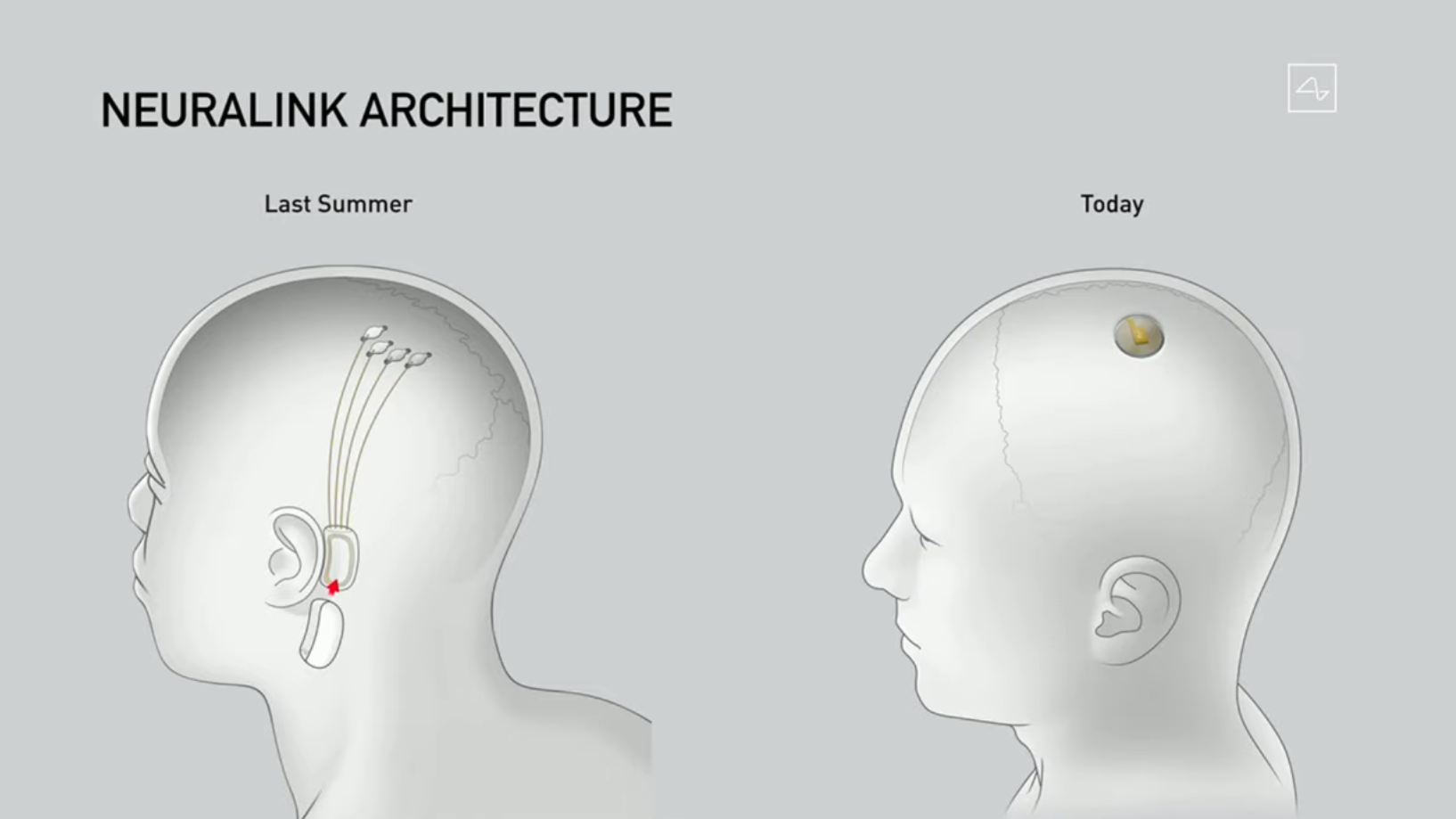
A lot of people would be scared at the prospect of having machines drilled into their head. Through the event, these fears and doubts were addressed in a way to make it digestible to common people.
The latest iteration of the Neuralink device is the size of a coin that replaces a part of the top-most cortical layer of the skull. The entire procedure is said to take less than an hour with no need for intensive care afterwards. The surgery will be done by robots for extreme accuracy, resulting in a safer and painless procedure. Patients will also not have to be administered general anaesthesia to perform the implantation.
The device has wires which will be inserted into various areas around the device to read and write information. Eventually, it will be controlled via a smartphone app.
What is the need for this?
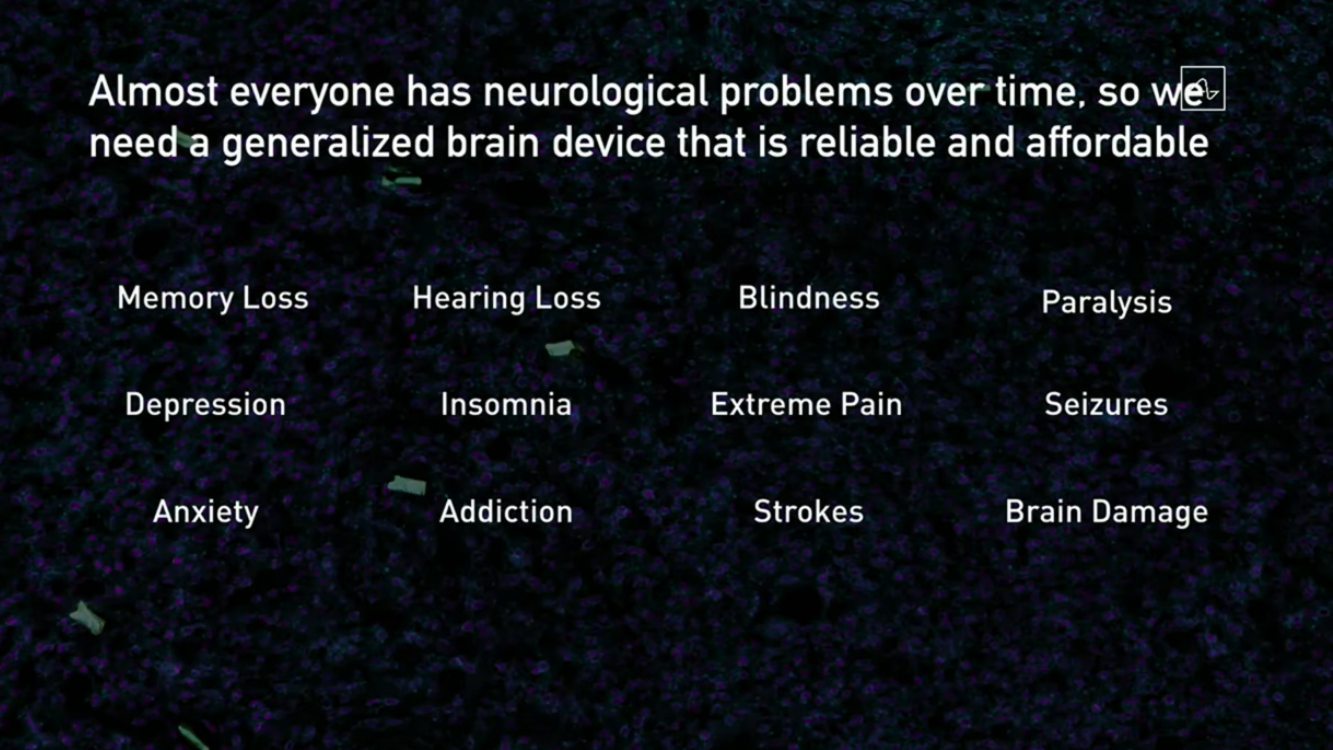
If you’ve followed Musk, you’ll know how important expanding human capabilities is for him. With age, many people fall prey to brain and spinal cord problems, which hampers their abilities. With Neuralink, these people can get a second lease at life. Since all senses are just electrical signals, if you can correct them you can theoretically fix them.
The current list includes the following neurological disorders: memory loss, hearing loss, blindness, paralysis, depression, insomnia, extreme pain, seizures, anxiety addiction, strokes, brain damage. It can also monitor the vital signs of a person even if it is not directly related to the brain, such as a heart attack.
Another application that was suggested was the ability to communicate without explicit speech. Musk considers words to be a very lossy format of transfer of data, and only those who know how to use it well excel at communicating. With the ability to share thoughts and ideas without needing to convert them to words and back will improve the way humans communicate. From a more practical standpoint, it can be used by people with motor impairments who can not talk or even type but need to “say” something.
Moreover, in the future, Neuralink also aims to achieve symbiosis with artificial intelligence, helping mankind unlock more capabilities which had been unfathomable till now. With technology being a bigger part of our lives each day, creating new and intuitive ways to interact with them becomes essential.
How is Neuralink better than the existing tech?

For any new technology that hopes to become mainstream one day, it has to be better or cheaper than the existing options. At the event, Musk took us through all the strides made in the device that puts it ahead of the competition.
Link v0.9 is the latest iteration of the Neuralink device, is the size of a coin, significantly smaller than the competition. This makes it more discreet as well as user friendly. In fact, the device won’t even be visible once implanted. Steps were also taken to ensure that it doesn’t come with implications that would lead users to not be able to live a regular life. The devices are designed to be able to withstand stress at levels similar to or better than the existing skull.
While it is currently limited to the cortex (responsible for movement, sight, touch, speech, etc.), they do plan on eventually going to the deeper parts of the brain such as the hypothalamus to access more actions.
How close is it to reality?
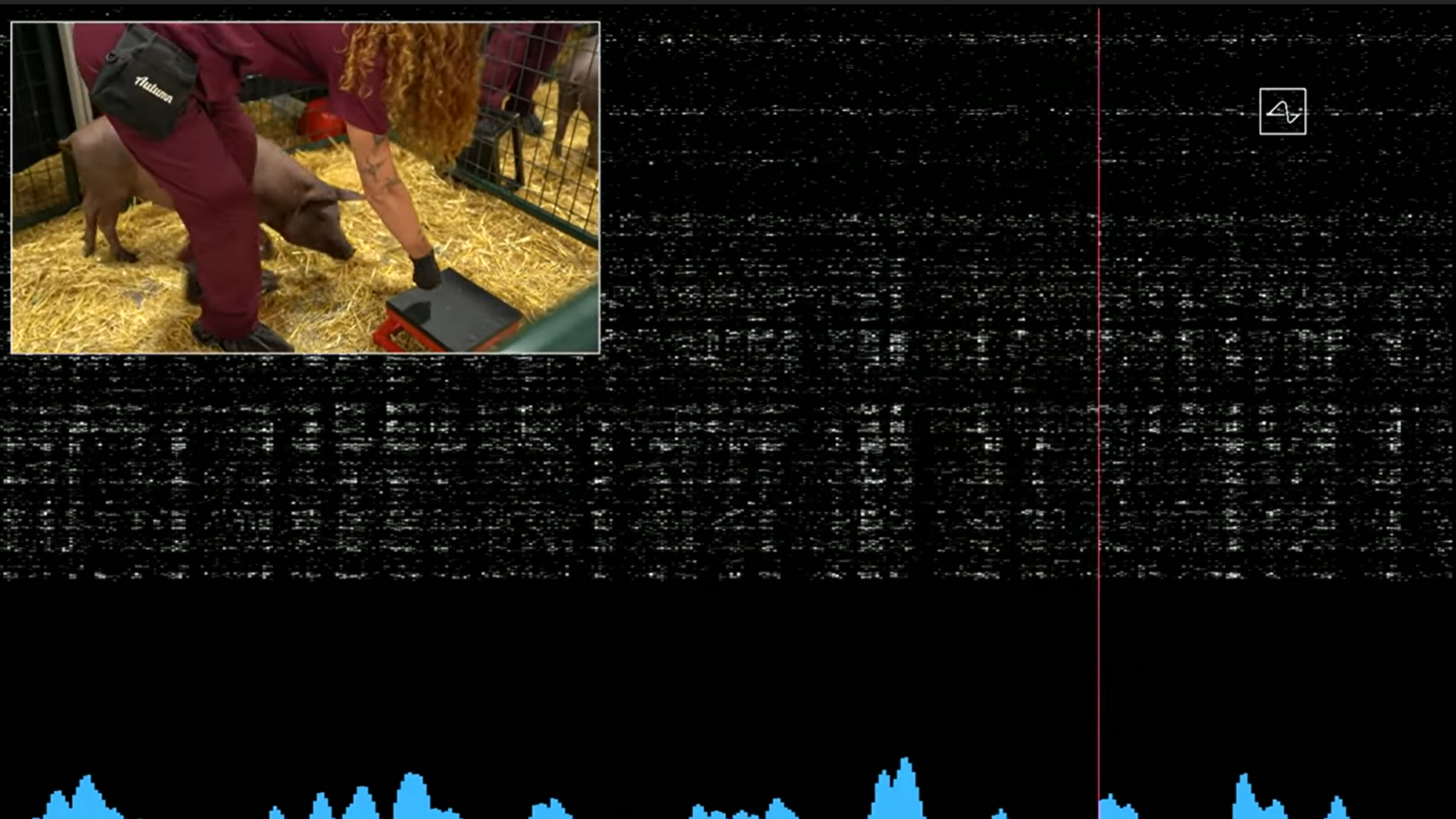
The event also saw the first public working demonstration of the Neuralink in action. Currently, the device is being tested on pigs owing to a similar skull structure and level of intellect. They also have a big part of their brain dedicated to olfactory senses to crunch the information coming from the snout.
Three pigs were present — one with no implant, one which had an implant but was now removed and one which had the implant for two months. The objective was to showcase how indistinguishable users at different stages would be. The last, named Gertrude, was let to sniff around her pan while the device recorded signals from the area of her brain linked to the snout. The readings were represented as an array of thousands of dots which would light up each time a neural spike was detected. It served as a proof of concept that the device can read and translate the data into actionable information.
Another experiment included a pig walking on a treadmill, where a wireless neural network would predict the position of the joints from the readings from the neurons. When compared with the actual positions of the limbs, the inferences had very high accuracy.
Similarly, two-photon microscopy footage of the brain was also shown when information was written in the brain. When the implanted electrodes were fired, the surrounding neuron bodies would light up in response. This will have to be successfully achieved at different power levels as some areas of the brains can be more difficult to activate.
Are the implants removable?

All Link implants will be surgically removable if a user decides to no longer participate. It is claimed to have no permanent side-effects except a small scar at the designated area.
Beyond reversibility, it also has a much bigger role in the future of Neuralink. When the state of technology improves, users should be able to upgrade to newer versions of the device to gain access to more features and abilities (Think of it as a smartphone).
Will it be able to summon a Tesla?

All Teslas (Elon Musk’s other company) have autonomous driving capabilities. A simple action on your phone app can get it to arrive at your doorstep, ready to pick you. During the Q&A session, one user asked on Twitter if Neuralink will be able to do the same without the need of a phone.
Showing his excitement, Musk answered: “Summoning a Tesla via Neuralink? Yes, 100%, that’s easy!”
How good is the current Neuralink device?
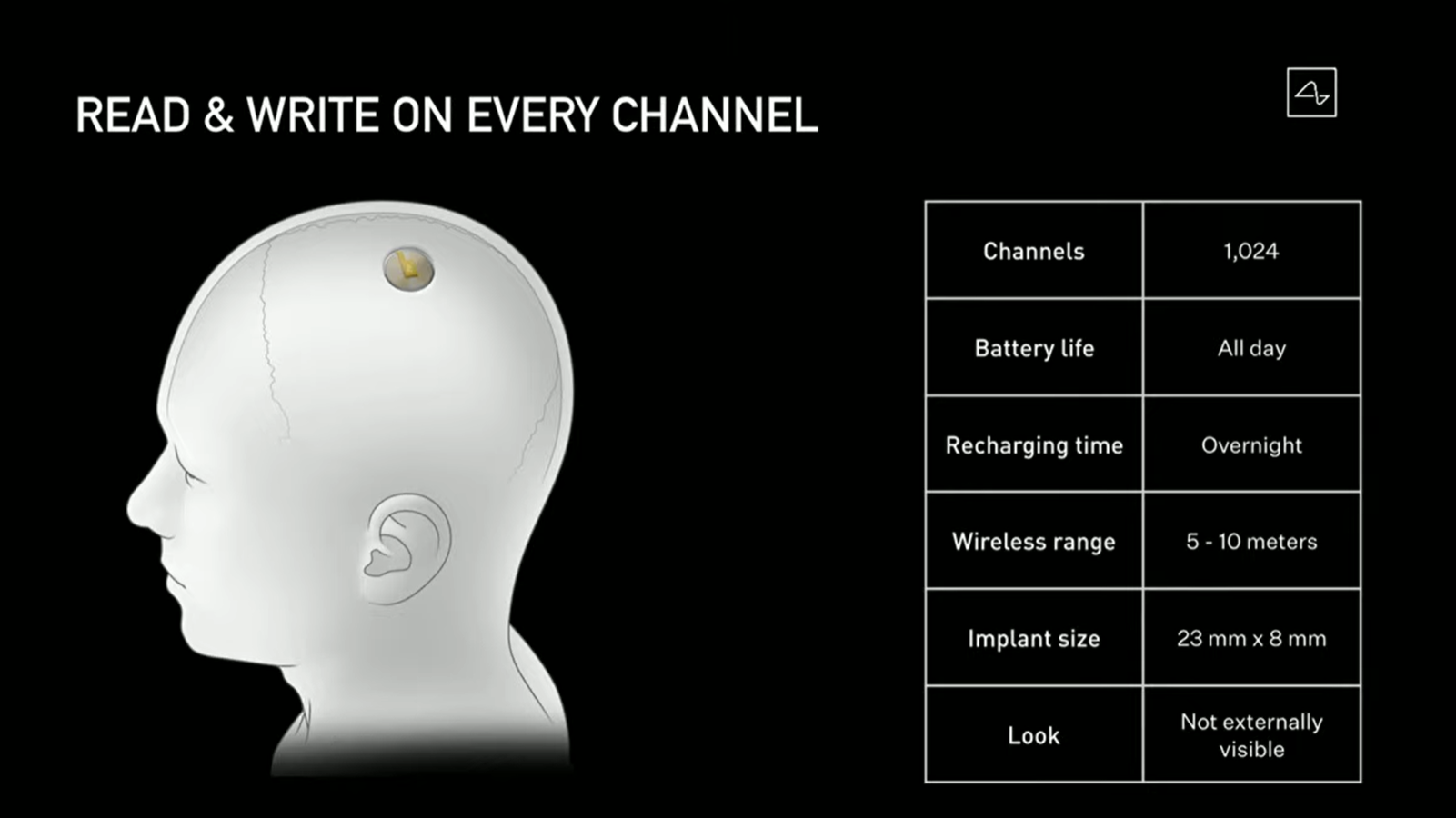
Specifications and abilities of the current system were also shared. Stated to be 100 times better than the other offerings, the current Link v0.9 has a whopping 1,024 channels that can read and write simultaneously at very high bandwidths. Currently, the data is read, converted and compressed on the device itself, but that could later be offloaded to the phone if the throughputs increase. Other sensors include a 6-axis IMU, temperature sensor and pressure monitors.
The coin-like part has a diameter of 23mm and a thickness of 8mm, helping it sit flush with the skull. The “wires” are the tricky bit. They need to be thin and malleable enough to not cause any damage to the brain, yet strong enough to survive in that corrosive environment; anything too thin and it could lose integrity and inductivity over time. Right now, the electrodes are about 5 microns in thickness (20 times thinner than human hair). With advancements and material research, it is estimated to go down to sub-micron levels.
It will be invisible and not externally visible. “In fact, I could have a Neuralink right now and you wouldn’t know. Maybe I do!”, giggled Musk.
When publicly available, all the features will be accessible via a phone app. It will have a range of 5-10 metres and will function over Bluetooth Low Energy. The battery life is rated as “all day”, and will have to be charged each night wirelessly (over induction).
What are some of the other use cases of Neuralink?

With a device that can seemingly expand the capabilities of the human mind, it potentially has a ton of non-medical applications. Elon’s vision includes achieving “symbiosis with artificial intelligence”, allowing humans to exponentially increase their knowledge base and skill set and using it for progress. Imagine being able to download hard skills at the click of a button!
Having an AI extension of yourself, like a tertiary layer over the limbic system and the cortex such that the future of the world is controlled by the combined will of the people of Earth; I think that that’s obviously gonna be the future that we want.
Towards the end of the keynote, the entire core team shared their individual moonshot abilities that would one day be unlocked via Neuralink (we implore you to watch it). Some of the notable ideas included using it as an added form of input for gaming; newer forms of communication and helping humans in more ways possible. For instance, if a person loses their eyesight due to non-neurological reasons, they could be fitted with a camera whose feed can act as vision.
Artists would no longer be restricted by their abilities of tangible portrayal as entire scenes could be projected wirelessly into someone else’s minds; With the advent of IoT and connected devices, users could also interact with other tech in their surroundings without needing to move; Memories could be saved and recalled at will, thus also letting people take control of their moods and emotions; Human sufferings such as pain can be done away with entirely; understanding what the conscience actually is; preventing diseases before they happen from chemical clues in the body; etc.
The path ahead
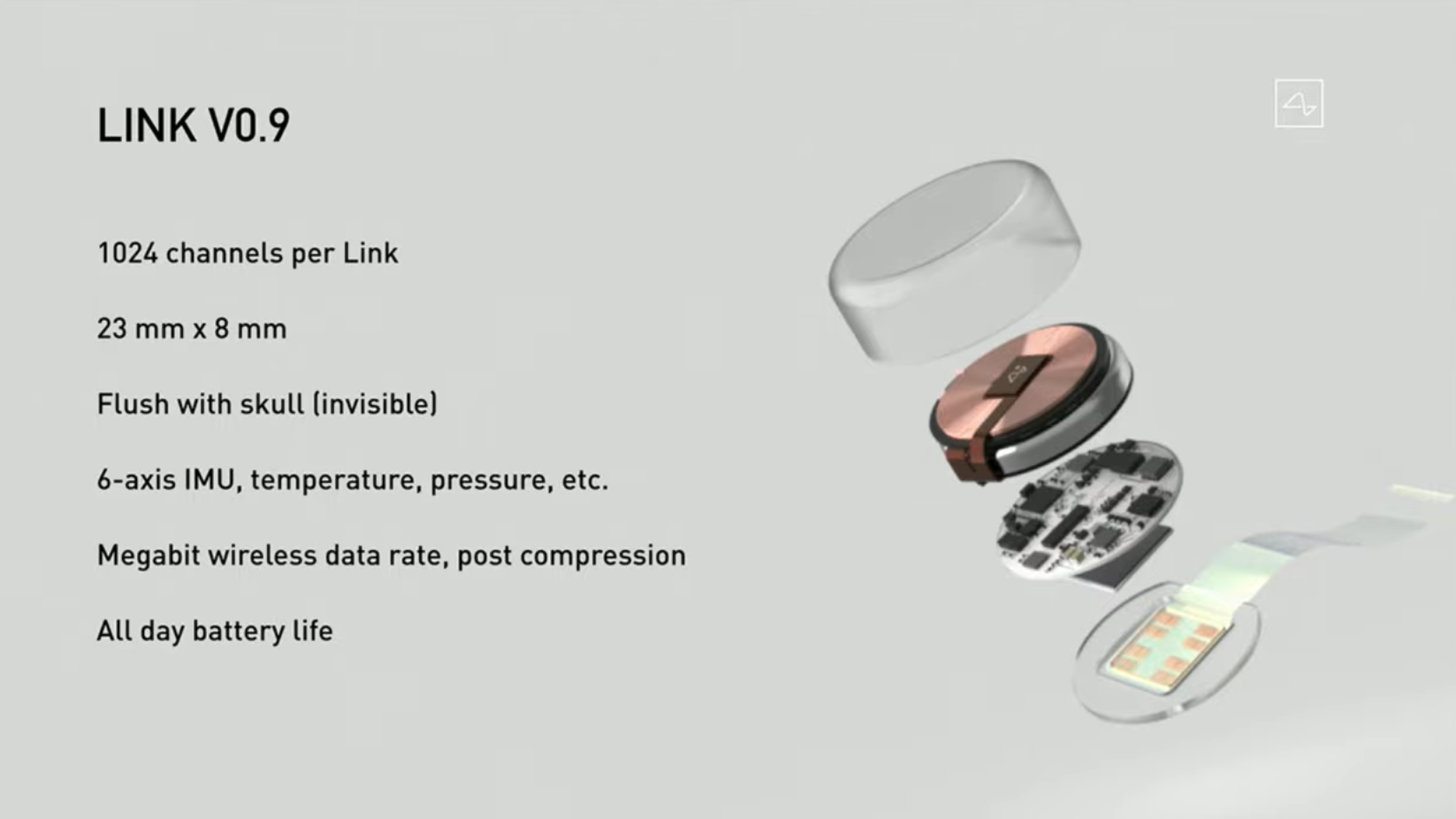
Neuralink is yet to begin trials on humans. It has however been granted Breakthrough Device status by the FDA, who will be working closely through the development and provide feedback. The first human implantations will happen “soon”, once the device clears the pending approvals and crosses safety standards. The first clinical trials will be conducted on patients with severe spinal cord injuries.
Considering the extremely sensitive nature of the information that will be dealt with, everything will be encrypted and stored in a way that human intervention will not be possible. As it progresses, it is likely to be governed by further laws and regulations.
Apart from these, there’s also the technological aspect of bringing this product to the market. It will be extremely expensive at launch but is targeting “a few thousand dollars” eventually. Neuralink’s mission of creating a generalized brain device that is reliable and affordable might just change the path of humanity’s future.
from TechRadar - All the latest technology news


No comments